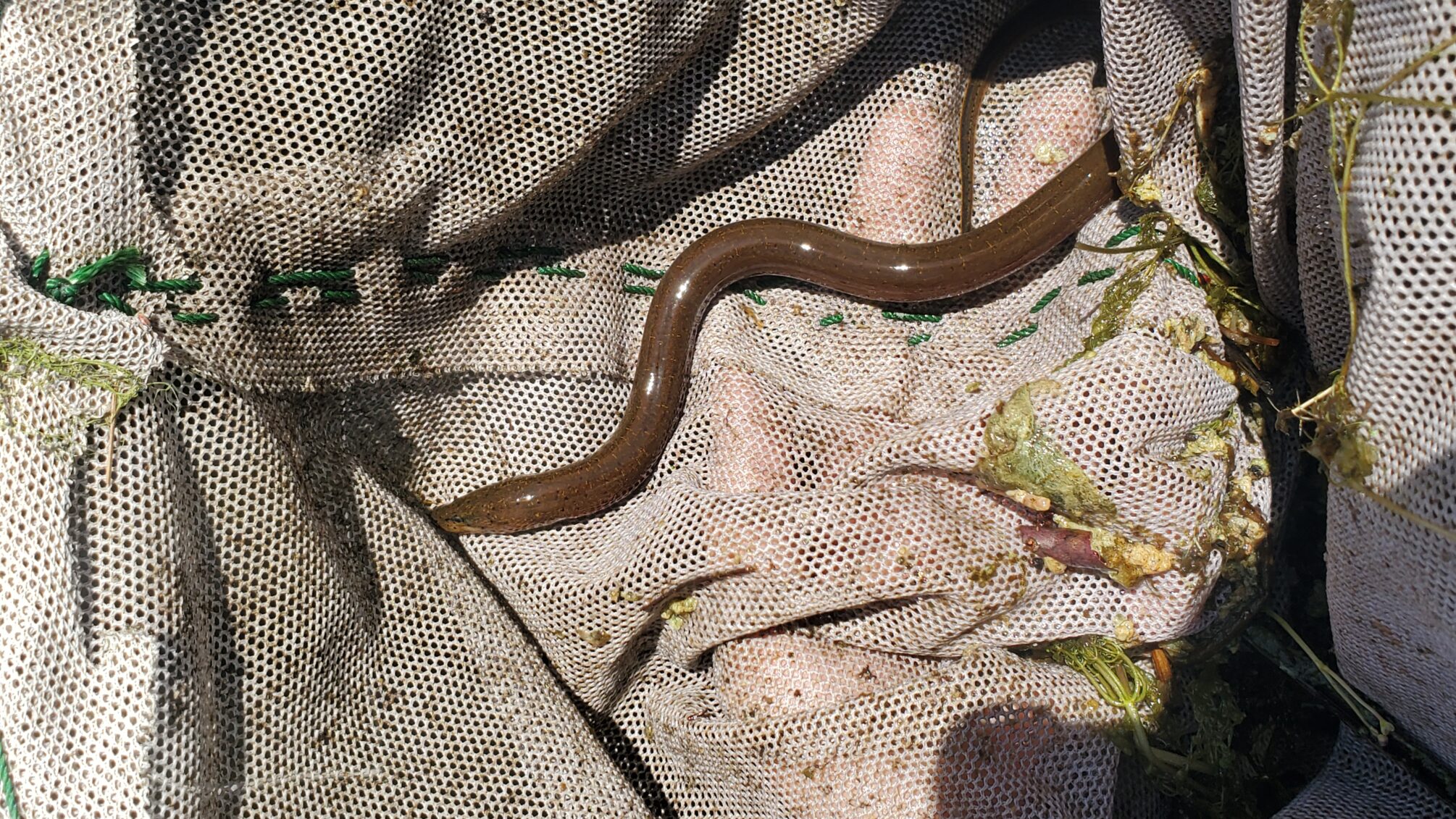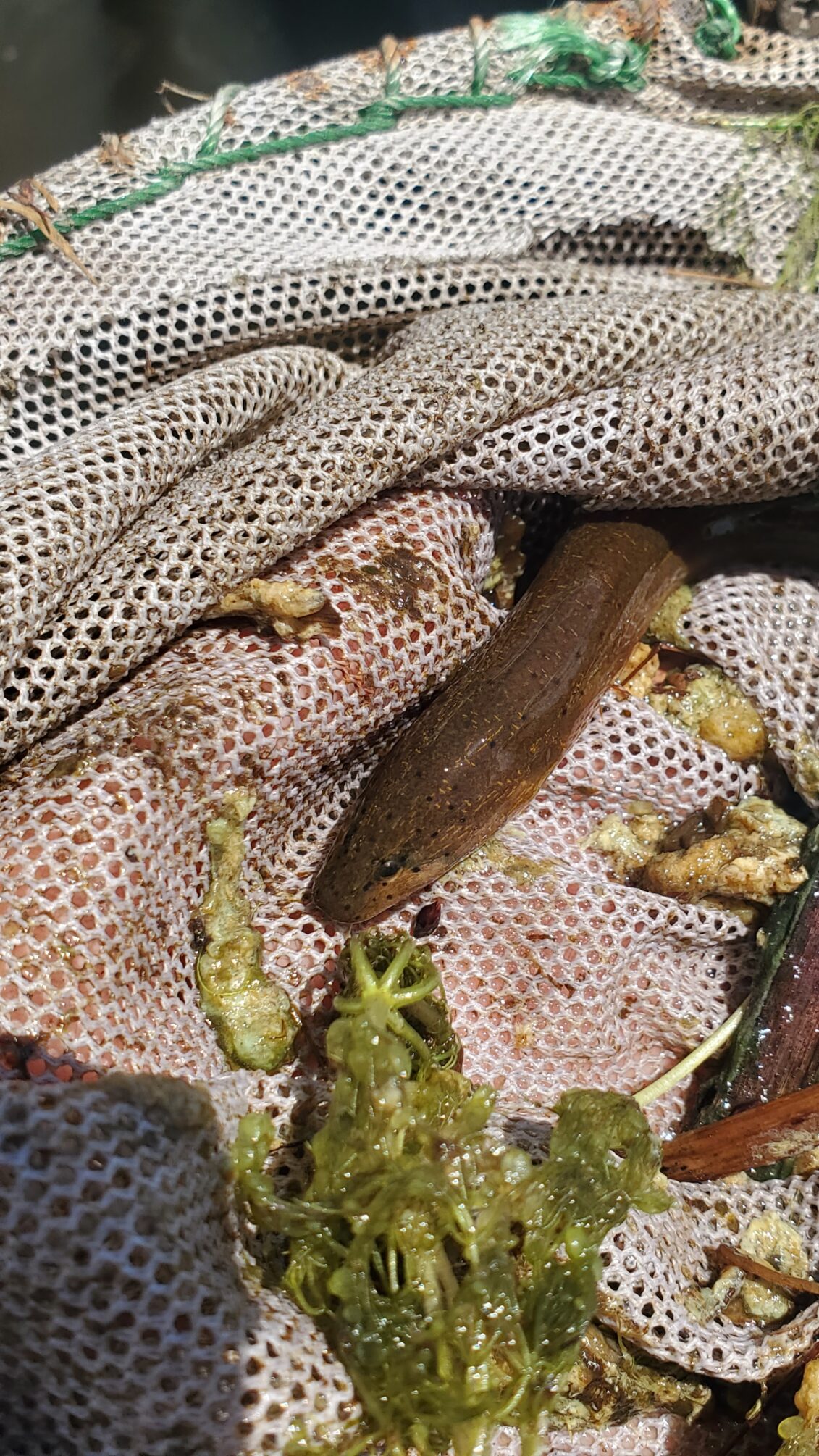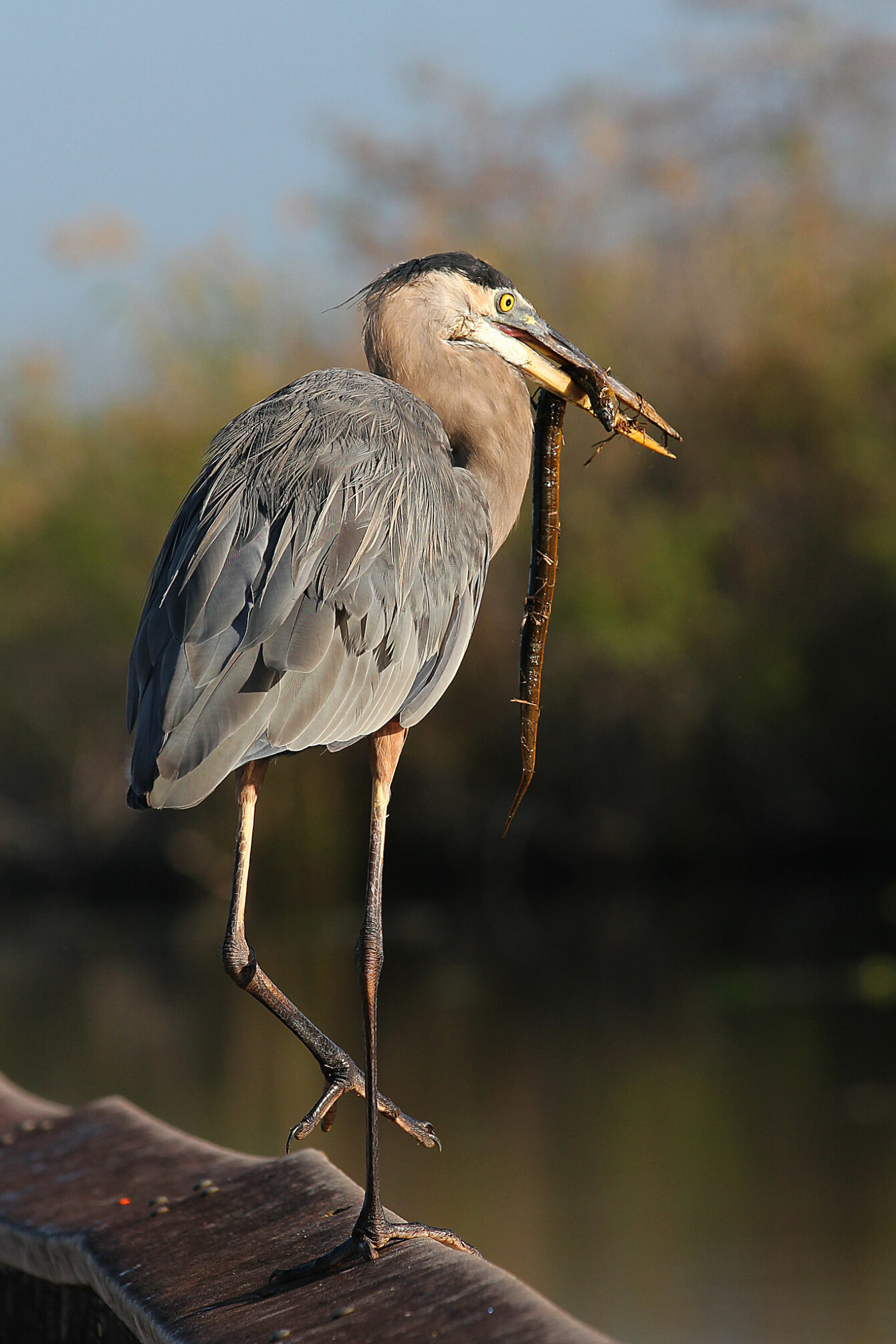Since its introduction into Taylor Slough in 2009, the swamp eel has nearly eliminated several populations of small aquatic species in the Everglades watershed. The new invasive may be more disruptive to the Everglades than the park’s flagship invasive, the Burmese Python, and brings a new challenge to Everglades management and restoration.
The results of a new study from the Florida Coastal Everglades (FCE) LTER are striking: between 2009 and 2014, several historically abundant aquatic species were nearly eradicated from Taylor Slough, a major watershed in the Everglades. “They were just suddenly gone,” says lead author Dr. Matthew Pintar. What had changed? One leading candidate was the introduction of the swamp eel, an introduced fish that, once established in the Everglades’ waterways, quickly took over the landscape.

Credit: Matthew Pintar, CC BY-SA 4.0.
A new invasive brings unpredictable change
Swamp eels were first reported in the FCE LTER in 2007, just outside Taylor Slough, the watershed targeted in this analysis and one of two main watersheds in the Everglades. In 2009, they were reported in the Slough, and by 2014, researchers had caught swamp eels at every sampling site throughout the 95 square mile watershed.
Yet the impacts of the new invasive were, until this study, unknown. As recently as 2018, the Florida Department of Fish and Wildlife reported that swamp eels posed an uncertain risk to the state’s watersheds, citing that “the species has not been shown to detrimentally impact native communities or aquaculture” in the state.
Dr. Pintar and his colleagues weren’t convinced that the swamp eels were benign invaders. In the field, he and others had noticed a shift in the small species they caught during regular sampling in the Everglades. The eels are voracious predators, eating pretty much whatever species they can catch. So he and his colleagues began to sift through FCE LTER data to see if they could see if the eels had, in fact, affected other species.
Small species populations declined once eels were introduced
As part of their long-term sampling, the LTER collected twenty-six years of population data for several species in Taylor Slough, which included thirteen years of data before swamp eels appeared. The researchers’ first task was to see if, in fact, population numbers had declined after the eel invasion.They focused their analysis on nine species: two crayfish, one shrimp, and six other small fishes, all of which were potential prey for the eels.
Declines in four species were dramatic. In the span of four years, two crayfish and two small fish species were nearly eradicated, suffering 99% population declines. Two other species of fish saw their populations drop by half. The remaining three species emerged relatively unscathed. The timeframe over which these declines occurred was notable: it coincided with the four years the eels took to spread across the watershed.

Credit: Janelle Goeke, CC BY-SA 4.0.
Beyond a reasonable doubt
Species declines, however, can have many potential causes. For aquatic species in the Everglades, historically, significant population declines are often caused by changing freshwater flows into the Sloughs. With a long history of anthropogenic disruption to flows and a more recent history of restoration efforts to bring water back to park watersheds, water levels in the sloughs can fluctuate wildly.

Credit: Janelle Goeke, CC BY-SA 4.0.
Were changing flows responsible for the species declines? Or were eels the true culprits? Without a good natural control in the Taylor Slough—the swamp eels invaded the entire watershed—the team would need to build a model that predicted the population numbers for each species if the eels had not invaded. In this case, that meant linking population numbers to the underlying hydrologic conditions at each sampling site. Comparing their modeled populations to the actual population numbers they recorded would reveal if the dramatic declines were due to underlying conditions, or due to something else.
Their population dataset contained thirteen years of pre-invasion data, enough to parameterize a model. And research within a National Park has its perks: the USGS monitors and then models hydrologic conditions across the whole watershed each day of the year, providing baseline conditions for their model.
The team built a model linking each species population to the hydrology at the sampling site for the pre-invasion period. They then used this model to predict the species populations based on hydrologic conditions for the post-invasion period.
Their model did not predict that the two crayfish and the two small fish would nearly disappear from the watershed. But it did a good job of predicting population numbers of the other species, who’s populations saw marginal changes after eels were introduced. Strong evidence, says Dr. Pintar, that something other than hydrology caused those populations to drop. Something like the swamp eel.
A perfect invasive?
There were other clues that the eels were to blame for the precipitous decline in those three species. Swamp eels are particularly drought tolerant, and are able to withstand seasonal dry periods, a characteristic of Everglades watersheds. The species which saw the most dramatic declines in Taylor Slough are species whose life cycles depend on those same dry periods.
Crayfish, for example, burrow into the mud through the dry season and reemerge first, rearing young well before their native predators, larger fishes or birds, return to the watershed. But swamp eels similarly burrow into the mud through the dry season and can emerge with the crayfish. That critical predator free period crayfish depended on is now gone.
A small fish, the Marsh Killifish relies on its drought resistant eggs hatching before predators return. Another small fish, the Flagfish, is also drought dependent, probably because its eggs are also drought resistant, though the true mechanism is unresolved. Just like the crayfish, both of these fish populations tanked once swamp eels invaded.
Plus, two adjacent watersheds, the Shark River Slough and Water Conservation Area 3A, didn’t show dramatic declines in these species over the same time period. Eels didn’t invade those watersheds until 2019. The two adjacent watersheds are an eel-free analog to the Taylor Slough. Though the underlying conditions are somewhat different for each watershed, the persistent prey populations in these neighboring sloughs provide additional evidence that eels have caused species declines in the Taylor Slough.
Is an eel scarier than a python?
The flagship invasive species in the Everglades is the Burmese Python, a nine-foot long behemoth of scales and muscle. Yet the effects of the swamp eel, the comparatively diminutive black swamp dweller, on the Everglades might outweigh those of its fellow invasive, says Dr. Pintar.
The ecosystem disruption from the swamp eel is immense. At a broad scale, the swamp eel has completely replaced the main control, freshwater availability, on some aquatic species in the Everglades. Prey populations used to fluctuate in response to drought. Now, populations of many species are determined by whether or not the swamp eel eats them.
What’s next for the Everglades?
The consequences of such a radical ecosystem reorganization are potentially immense, though they are yet unresolved. Small species anchor the diets of many larger predators, such as alligators and wading birds. Birds already garner significant restoration attention within the park. Without crayfish, these species are forced to shift their diet to other small organisms or begin to eat the eels themselves. As of now, it’s unclear how dramatic the predator response will be, says Dr. Pintar.

Credit: Judy Gallagher, CC BY-2.0, via Flickr
It’s also unclear how disastrous the swamp eel problem will become. Swamp eels have spread rapidly throughout the rest of the greater Everglades ecosystem. The Shark River Slough and Water Conservation Area 3 are now full of eels, though the eels were first detected in 2019. These two watersheds are also routinely sampled by the LTER. It’s highly likely the eels have spread across other areas of the Everglades that lack similar monitoring.
A novel species in the food web, it remains to be seen exactly what an eel is willing to eat—and what might be willing to eat an eel. This balance, and where the food web lands after rebalancing, will determine the extent of the disruption. Luckily, the ongoing data collection at the LTER should reveal how populations fluctuate in fine detail.
Controlling the eels’ population is difficult, and Dr. Pintar thinks that any potential strategies are high effort and not that effective. “These things are just really hard to catch,” he notes. Despite some of Dr. Pintar’s team using electroshocking, the best strategy available, to catch eels, they only managed to capture a portion of the invasive species in the slough. The remaining population could readily bounce back. “And they’re everywhere in the canals,” he notes, underscoring the challenge of outright elimination of the eel.
The first step is acknowledging the problem
Still, understanding the extent to which swamp eels have disrupted the food web is a critical step towards remediation. This study reverses the notion that swamp eels have little to no effect on their ecosystem. Furthermore, the study underscores the need for comprehensive long-term monitoring to set a baseline before disturbance. Examining the full impact of the eels on these species was only possible because thirteen years of pre-invasion data was available.
If the swamp eels weren’t historically a major focus for Everglades research, they certainly will be in the future.
by Gabriel De La Rosa










